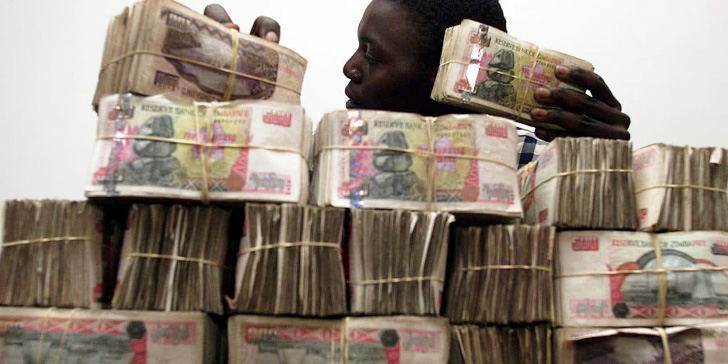Inflation and exchange rates, how do price changes affect the exchange rate of the national currency?
The inflation rate is one of the key economic factors; its change affects many other economic indicators, including the country's exchange rate.

Let's try to understand how inflation and exchange rates are related, and to what extent the value of the national currency depends on changes in consumer prices.
It is generally accepted that there is a stable relationship between changes in the inflation rate and the exchange rate of the national currency.
That is, as prices for goods and services rise, the value of the national currency falls relative to other global currencies. And as domestic prices stabilize and inflation slows, the currency's exchange rate stabilizes.
Inflation growth and exchange rates
There are many reasons that explain why the national currency depreciates when prices rise:
- Money loses purchasing power – one unit of national currency can buy fewer goods and services.
- Falling investor interest – traditionally, only currencies from countries with low inflation are in high demand among investors.
- Increased demand for foreign currency – during periods when everything becomes more expensive, the demand for foreign currencies increases sharply.
An excellent example of the impact of inflation can be found in the following facts:
- Zimbabwe - in 2008, the inflation rate in the country was 231 million percent, at the beginning of 2008, one US dollar was worth 30,000 Zimbabwean dollars, by the end of 2008, 1 US dollar was already worth 100 trillion Zimbabwean dollars.

- Ukraine – In 2022, the official inflation rate in Ukraine rose to 26.6%, while during the same period, the Ukrainian hryvnia exchange rate fell by 33% against the US dollar.
It should be noted that this pattern is not always observed, as foreign currencies may also have their own inflation rates. Take the US dollar and the Swiss franc as an example.
https://www.forbes.ua/ in 2022 , but the Swiss franc remained virtually unchanged against the dollar. The secret lies in the fact that consumer price growth in the US in 2022 was even higher, a whopping 8%.
Deflation and the national currency exchange rate
If high inflation reduces the exchange rate of a currency, then it is natural to assume that deflation will cause the national currency to strengthen.

More often than not, this is what happens: after news about a decrease in the rate of inflation appears, the exchange rate of the national currency stabilizes.
An example of the impact of deflation on a currency exchange rate is the Swiss franc . In 2009, the overall price level in the country fell by 0.7%, indicating deflation. This caused the Swiss franc to strengthen against the US dollar by 10%.
As a result, we can conclude that two indicators such as inflation and exchange rates are quite closely related, and there is an inverse correlation .
That is, an increase in the consumer price index leads to a decrease in the exchange rate of the national currency and, conversely, a decrease in inflation causes a strengthening of the national currency.
This pattern can also be used in a news trading strategy the economic calendar can be used as a source of signals .

